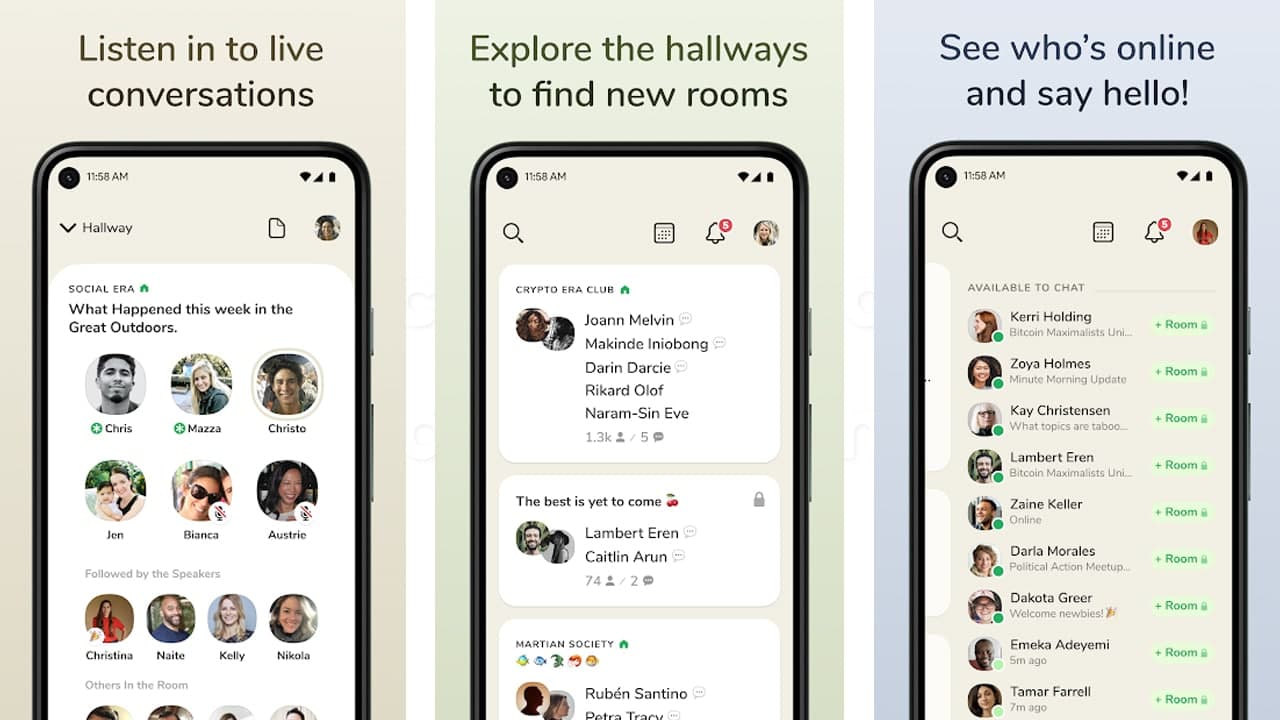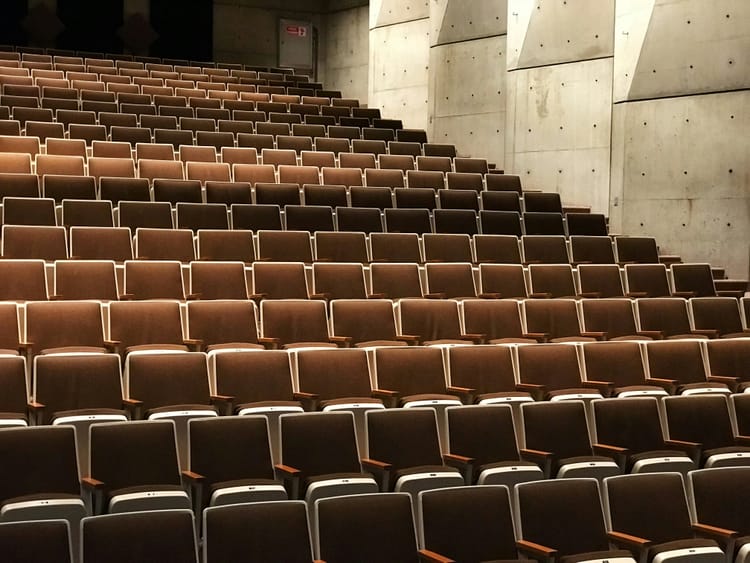It’s often stated that podcast listeners are loyal. And with good reason. Most keep coming back week in, week out to hear more from their favourite creators. But what is it that makes someone feel so invested in one particular show? Why are they willing to give it a regular slot in their busy weekly schedule?
Yes, of course the quality of the content matters. That’s a given. But there’s another dynamic at work here: the power of community.
Our favourite shows become our favourite because they make us feel connected to a larger group of like-minded people. We implicitly enter into an invisible, international community of listeners who also consider this show one of their favourites. We share a common set of interests, we laugh at the same jokes, and we’re in it for the long-haul. We let the host take us on a collective journey for an extended period of time - often over several years.
But building and engaging a community doesn’t happen by magic. It takes some planning, effort, and deliberate action to get it right. In this article, we’ll explore the different ways you can intentionally incorporate community-building elements into your podcast.
To help us do that, we reached out to two podcasters on MatchMaker.fm who have both successfully created inclusive, interactive, and engaging listener communities - James Azar, host of CISO Talk and creator of The CyberHub Podcast network, and Kimberly Berry, host of Being UnNormal.
Through the CyberHub, James creates content and resources to help cybersecurity practitioners in their mission to keep their organizations secure. And at Being UnNormal, Kimberly focuses on a variety of mental health topics designed to educate and empower listeners to take control of their own wellbeing and personal growth.

1. Recurring or “Insider” References & Jokes
When a listener feels a personal connection to a show, they’re much more likely to love it. But what can you do to make your show feel personal to a large group of people?
One approach is to create recurring insider experiences that they all share. These are the insider references and jokes that only long-term listeners will fully appreciate. They represent a wink and a nod back to previous episodes. And they make those repeat listeners feel in the know. They make them feel like part of a community.
As an example, the Sika Strength olympic weightlifting podcast uses a repeated reference in a lot of episodes. They invented a fictional nation called “The Republic of Sikastan”, of which their listeners and viewers are a part. There are a host of minimum entry requirements to "gain a visa" for Sikastan, and the whole history and mythology associated with the imaginary nation continues to develop over time in an ad hoc way. These tongue-and-cheek references make listeners feel personally connected to each other and the show itself.

In real life, inside jokes and shared experiences deepen bonds among friends. And they do exactly the same when it comes to podcasting.

Book your next guest the easy way
With more than 70,000 members, MatchMaker.fm is the largest online community connecting podcasters & guests.
Join MatchMaker today2. Responding to Messages & Emails
If you’re serious about building a sense of community around your show, make it easy for listeners to contact you. Especially in the early stages.
Most podcasters point listeners towards their social channels or to a dedicated email address for the show. Let people know the details in your episode intros, and include them in your episode descriptions as well.
When you’re just starting out it's important to actively encourage listeners to get in touch. You should make them feel that their opinion and input is genuinely valued. This is something James Azar tapped into after launching CISO Talk:
"I wanted listeners to know, I was a human no different than any other and always happy to take calls, set up meetings, answer questions, or bring up topics. This helped me build loyalty and organic growth."
As your audience grows, you’ll naturally start receiving more messages and emails. Don’t let them pile up. Try your best to stay on top of them. Not only is replying to messages one of the best ways of earning listener loyalty, it’s also just good manners. Nobody likes to feel like they’ve been ignored.
You don’t have to respond with entire paragraphs. In most cases a few words or sentences is more than enough. People just like to know their voice is acknowledged and valued.
3. Answering Listener Questions During Episodes
Responding to listener questions during your episodes makes your audience feel connected and involved in the show itself. It’s also a continual reminder that other people just like them are tuning in. Again, this is most applicable to educational / informative shows. But it can work well for most other formats too.
It’s also a way of guaranteeing the content you produce will resonate with your audience. You’re not creating what you think people might want to hear. You’re covering topics you know they’re interested in. So this listener engagement strategy can actually help you record better content as well. A win win.
There are two main ways you can approach this. You can add in a regular segment e.g. answering a few listener questions at the beginning or end of your episodes. Alternatively, you can produce entire episodes solely focused on answering listener questions.
4. Create & Manage a Platform to Connect
As well as giving listeners opportunities to interact with you, it’s also important to create a space where they can interact with each other too. Creating a forum of Facebook Group for your podcast is the simplest way of doing this. It gives listeners an opportunity to find their voice, share thoughts, and build relationships. This is something Kimberly Berry has done for her audience:
"We have a private Facebook Group community to support our listeners and provide them with helpful tools and resources. One of the core missions of Being UnNormal is to break down stigma and give community to those who feel isolated and alone during a mental health crisis."
Likewise, James Azar also brings listeners together, but he uses Clubhouse rather than Facebook, which may offer some unique advantages.
If you haven’t heard of it, Clubhouse is an audio-centric social networking app that lets users gather in audio chat rooms and discuss any topic of their interest. Each room is divided into two groups: the listeners and the talkers. As a podcaster this allows you to engage in one-on-one or roundtable discussions with your listeners.

As James has found, if you use your time on the platform wisely, engaging in conversations and reaching out to the right people, you may see your show’s community grow and strengthen.
"The multiple rooms I host on Clubhouse each week have really helped drive my following and growth."
Choosing the right community platform depends on your audience. Clubhouse is an appropriate choice for the tech savvy listeners of a show like CISO Talk. But if your listeners come from a diverse range of backgrounds, a more established and accessible community platform like Facebook is probably the best way to go.
Lastly, keep in mind that moderation is essential in online communities. Sales pitches, spam, and trolls need to be flagged and removed as quickly as possible. Unfortunately there’s no way of avoiding these, so you need to keep a watchful eye (or ear in the case of Clubhouse) over posts and comments to make sure anything inappropriate is dealt with. If you don’t have time to handle this yourself, consider enlisting a few of your most loyal listeners to help out with this.
5. Create a Podcast Newsletter
If you listen to lots of podcasts, chances are you’ve already heard a few of your favourite hosts plug their newsletter or mailing list. The basic premise is simple. If you enjoy the show and want to stay connected, you head to their site and input your email. You’ll then get regular updates from them direct to your inbox.
This means a podcast mailing list essentially represents a highly-engaged portion of a show's listening audience. Through the act of signing up, these listeners have implicitly said:
Please send me helpful or interesting things, I want to know more.
Some of these people may simply want to receive email reminders about new episodes. Others may want to deepen their engagement through “behind the scenes” access and helpful content exclusive to your newsletter. In either case, it opens up a direct line of communication between you and your most engaged listeners.
The two-way connection you establish via a podcast newsletter is extremely valuable. It creates a sense of community among your listeners. It strengthens your connection to your audience. And it’s the most effective way of converting your listeners into customers (if you’ve created your podcast to help grow your business). For more on how to build and grow a podcast newsletter, check out our in-depth guide below:
6. Host Live Events
A live podcast event gives listeners the chance to see you perform and even influence a show they love. It brings a community of like-minded fans together, giving you the opportunity to forge a deeper connection with them. And if listeners have a great time, you can pretty much guarantee they’ll tell others about it. This is something Kimberley has found a lot of value in, and she offered some practical advice on how to get started:
“Live events are fantastic. They really give you an opportunity to understand the impact of your work. I suggest finding local partners who can offer you a venue, and in kind you can promote their business by advertising your live event. Think outside the box - my first live show was at the local library!

I was afraid that no one would show up to my first taping, so I decided to let go of my perceived fear of rejection. My show is about my personal mission, so regardless if 1 person or 100 showed up, I would be ready to provide immense value no matter what. 33 people showed up to the first live event, and the second one was bigger! You just have to take the leap of faith, and let go of your attachment to achieving a particular outcome in terms of number of attendees.”
If you’ve been running your show for more than a year and you’ve built up a solid core audience, hosting an in-person event is seriously worth considering. Obviously there is some risk involved and you need to make sure you’re able to cover your costs. But if the demand is there, it’s worth a shot. It may be the key that helps take your show to the next level. For more on how to organise a live podcast event, check out our conversation with Hishem Azzouz, host of The Recruitment Mentors Podcast:
Don’t Forget Content is Still King
Ultimately, the best way to develop and engage a true community is to create something that people actively want to be part of. It’s a chicken and egg situation: you can’t create a community without first creating a truly great show.
If your content is average at best, you’ll simply be spinning your wheels trying to implement the strategies outlined above. That’s why you ultimately need to focus on mastering the basics of podcasting: of expertly drawing on your unique personality, background, and experiences to produce a show that’s worthy of the community you hope to grow.
Before strengthening his community, James Azar spent a lot of time and attention trying to build something listeners want to spend time with in the first place:
“I focused on content and never compromised, I consistently searched and asked for feedback, studied my competitors, and aimed to offer an alternative and more robust point of view. It was important for the community to see the content value increase over time.”
Likewise, Kimberly’s core mission has always been to embark on a journey to truly transform her listeners lives:
"The content is always king, we focus on inclusion and unity on our podcast to send a clear message to our listeners: you are in the right place."
Once you nail the fundamentals, you can then take subsequent steps to activate the resulting community.
Be Realistic About What You Can Achieve
You don’t need to follow every single community-building strategy outlined above. Some approaches might be more appealing to you than others, and that’s ok. As Kimberly explains, you’re better off doing a few things really well than trying to do everything at once and spreading yourself too thin:
“When it comes to building community with your listeners, ask yourself what you envision the end result to be. Then ask yourself how much time you are willing to give to accomplish this result. All the aspirations in the world don't mean a thing if you can't execute on them. Community building takes time, value, trust, and consistency. Be patient with the process, especially if you are doing this alone.”
This point was also echoed by James:
“There is no easy path to success, it takes hard work, time, planning and creating engaging content to keep people tuned in.”
If you reach out in a positive way, and reward those who do likewise, you build community. And that in turn will help your show to grow. Remember, never take your existing audience for granted. They’re your key to success.

Book your next guest the easy way
With more than 70,000 members, MatchMaker.fm is the largest online community connecting podcasters & guests.
Join MatchMaker today





